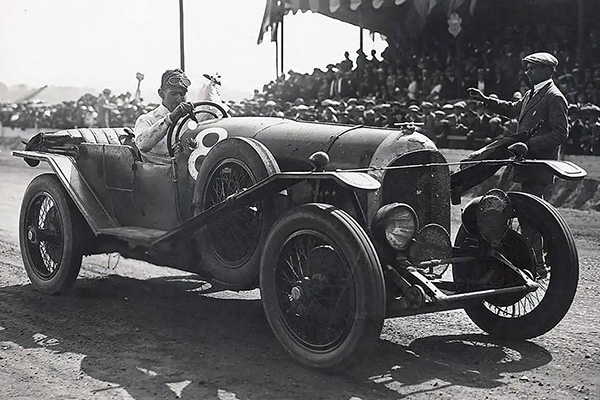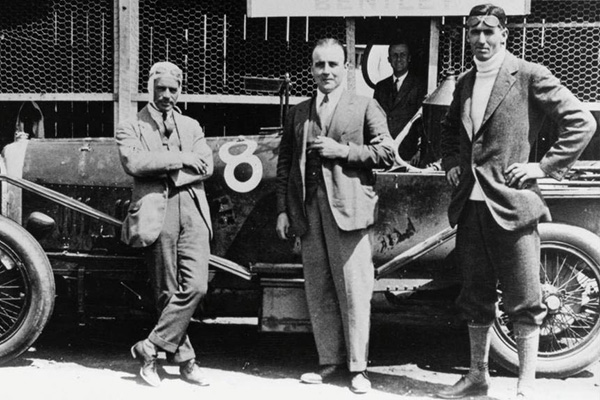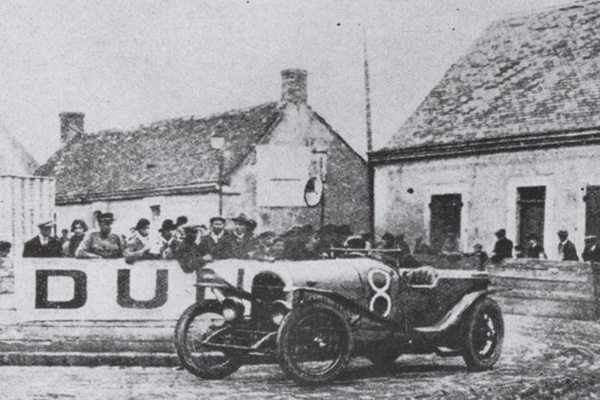100 years since Bentley first won Le Mans
It could all have been so different for Bentley when it started out as a car manufacturer. Rather than enjoying the glow of success from competing at and winning Le Mans, the company very nearly didn’t enter the epic 24 Hours du Mans. WO Bentley, founder and force behind the company, was far from convinced of the benefits of racing and it took some persuasion to get him to concede to a team running his cars in the inaugural race in 1923.
The earliest attempt
That first race was won by the French team of Andre Legache and Rene Leonard driving a Chenard et Walcker, giving the event a home win on all fronts. However, the Bentley outfit had come home fourth at the end of the 24-hour marathon race, and it had also set the lap record. It was enough to turn WO Bentley’s attitude towards the race and led to its famous first win in 1924.
Unlike the front-running teams at Le Mans now competing under a manufacturer banner that are wholly professional motorsport businesses, the group that assembled for Bentley’s run at the 1924 Le Mans was made up of gentleman racers, some factory support, and a good deal of derring-do. From this emerged a group who quickly became known as the Bentley Boys.

Courtesy Bentley
One of the leading figures in all of this was John Duff, who had raced his own Bentley at Le Mans in 1923. He knew what it took to race for that length of time and how to prepare a car to cope with the challenge. Duff had survived the First World War and had already raced in a variety of cars at other tracks such as Brooklands in the UK. WO Bentley had also spotted areas where his cars could be improved to meet the rigours of racing flat out and non-stop for 24 hours. As a result, the 3 Litre cars that entered the 1924 event now came with mesh protection for the headlights to ward off stone damage. There was also extra shielding for the petrol tank and radiator to prevent damage and leaks. The Bentleys had brakes fitted to all four wheels when many other cars taking part in the race stuck with brakes on just a single axle. Bentley also used Rapson tyres that had been developed to last longer than other tyres.
Returning ready for revenge
All of this work made the Bentley 3 Litre cars among the most developed in the field at the start of the 1924 race. Ranged against the Bentleys were a number of Bugattis, Delages, Sunbeams, and a variety of other French makes all keen to repeat the domestic success of 1923. With six cars entered by Chenard et Walcker, it looked like the British team would be fortunate to even make the podium to improve on its result from the previous year, and Bentley only entered one car so everything was staked on Duff and his co-driver Frank Clement, who was Bentley’s own test driver.

Courtesy Bentley
As the start drew near, the weather seemed perfect for racing as it was dry and warm, but this also meant plenty of dust from the track as much of its was loose surface rather than the perfect tarmac of today’s circuit. As the car’s headed off and came round to complete the first of many laps, the confidence of the French looked justified as Legache headed the field. A further blow to Bentley’s hopes came when Philippe de Marne driving a Bignan easily beat the lap record set the previous year by a Bentley. It showed how fast the pace was in 1924, and this was just the first lap.
Raising the roof
As part of the event, any convertible car taking part had to come into the pits and put up its hood. Duff had practised this and took just 40 seconds to complete this requirement, gaining valuable time on his rivals as they struggled with canvas and hoops. The rapid start to the race played into the hands of Bentley with its thoroughly prepared car. It might not have been the outright fastest, but others were suffering and dropped out while the 3 Litre kept pounding round each lap. There was some consternation when Duff pulled into the pits on lap 19 for refuelling to be told by an official he wasn’t allowed to do this until he’d completed 20 laps. Heading back out, he managed the extra lap and made the refuelling stop with drops to spare in the tank.

Courtesy Bentley
As night drew in, the Bentley was running well and among the front-runners. By now, only 25 cars from 30 starters were still in the event and more were to fall by the wayside as the stress of competition took its toll. Around 10pm, Duff was back in the pits due to a problem with the car’s gearbox. It was half an hour before an errant staple was found inside the casing and removed, and with that the 3 Litre was back on track and working to catch up with the leaders again. It did this steadily through the small hours and, as dawn broke over the circuit, the only car in front of the Bentley was the Lorraine-Dietrich of French driver Robert Bloch. When Bloch’s car had a puncture, the Bentley pounced into the lead and built this into a two minute advantage by late morning. In trying to catch up, Bloch blew the engine in his car and retired.
Almost snatching defeat from the jaws of victory
Yet the Bentley team could not relax. Thinking they were taking the correct approach with a cautious final wheel and tyre change around 2.30pm on Sunday, it turned into a near disaster when one of the wheels would not come off. It was eventually removed and another fitted, but it very nearly cost the British team the lead and victory. In the end, though, the Bentley 3 Litre took the chequered flag to win the first of six victories to date. Bentley went on to dominate Le Mans in this early period, winning four in a row between 1927 and 1930. It sealed the company’s links with the race and gave Bentley its sporting image that continues to this day. And to think WO Bentley said before the 1923 event: “The whole thing is crazy. Nobody will finish. Cars are not designed to stand that sort of strain for 24 hours.”
Did you know the story of Bentley's first Le Mans? We'd love to hear your thoughts in the comments below.

COMMENT